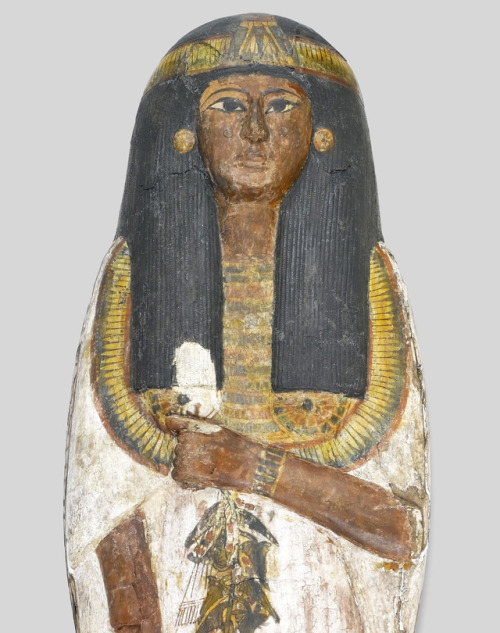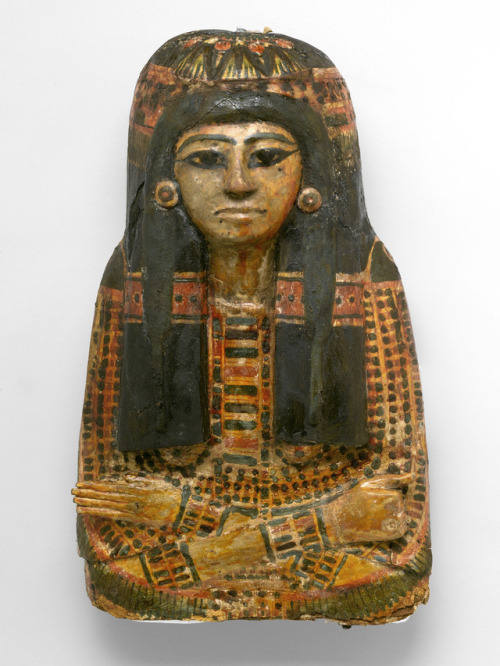In ancient Egypt, a tomb was not simply a place for the burial of remains, but rather the site of qu
In ancient Egypt, a tomb was not simply a place for the burial of remains, but rather the site of quite literal rebirth. Here, the individual’s soul was born again, into the afterlife. But surprisingly, the ancient Egyptians believed that to make this rebirth possible for a woman, it was necessary that she briefly turn into a man, in order to conceive the fetus of her reborn self. Guided by new research inspired in part by feminist scholarship, our collection exhibition A Woman’s Afterlife: Gender Transformation in Ancient Egypt explores how this process was thought to take place.Color played a key role in gender transformation in the tomb. The representation of this woman on her coffin with red skin, a characteristic considered to be male, was a magical intervention that transformed her gender. This coffin’s red face, hands, and feet invested her with the male power to create a fetus for her own rebirth.The yellow cartonnage mask (right), in direct contact with the mummy, altered her gender role once again. Yellow skin represented the skin of a goddess made from gold. Now, returned to her original female state, she incubated the male-created fetus, gave birth in the tomb, and lived forever in the next world as a woman. Language transformed a woman’s gender, a necessary step in creating her own fetus inside the coffin. In Egyptian, the word meaning you had both masculine and feminine forms. The arrow in the illustration points to an inscription that reads, “Words spoken by Imsety … I protect you.” The deity Imsety, represented on the left, pronounced this sentence using the male pronoun for you rather than the female pronoun. These words are repeated four times on the coffin’s sides. It was believed that the miraculous power of language to transform reality could be used to change an individual’s gender.Scholars had long called this usage a mere grammatical error. Feminism influenced scholars to take this Egyptian practice seriously by adopting a broader view of gender, rather than dismissing the usage as a mistake. More recent scholarship recognizes that the male pronoun on this woman’s coffin represented powerful magic that caused gender transformation.Coffin of the Lady of the House, Weretwahset, Reinscribed for Bensuipet Containing Face Mask (right) and Openwork Body Covering, ca. 1292-1190 B.C.E. Wood, painted (fragments a, b Cartonnage, wood (fragment c; cartonnage (fragment d), 37.47Ea-b Box with Lid in place. Brooklyn Museum, Charles Edwin Wilbour Fund, 37.47Ea-d. -- source link
Tumblr Blog : brooklynmuseum.tumblr.com
#awomansafterlife#bkmegyptianart#egyptian art#gender transformation#afterlife#ancient egypt#egypt#mummy#coffin#mask#weretwahset#bensuipet#color#words#transformation#role#skin#magic#rebirth#highlight#brooklyn museum

